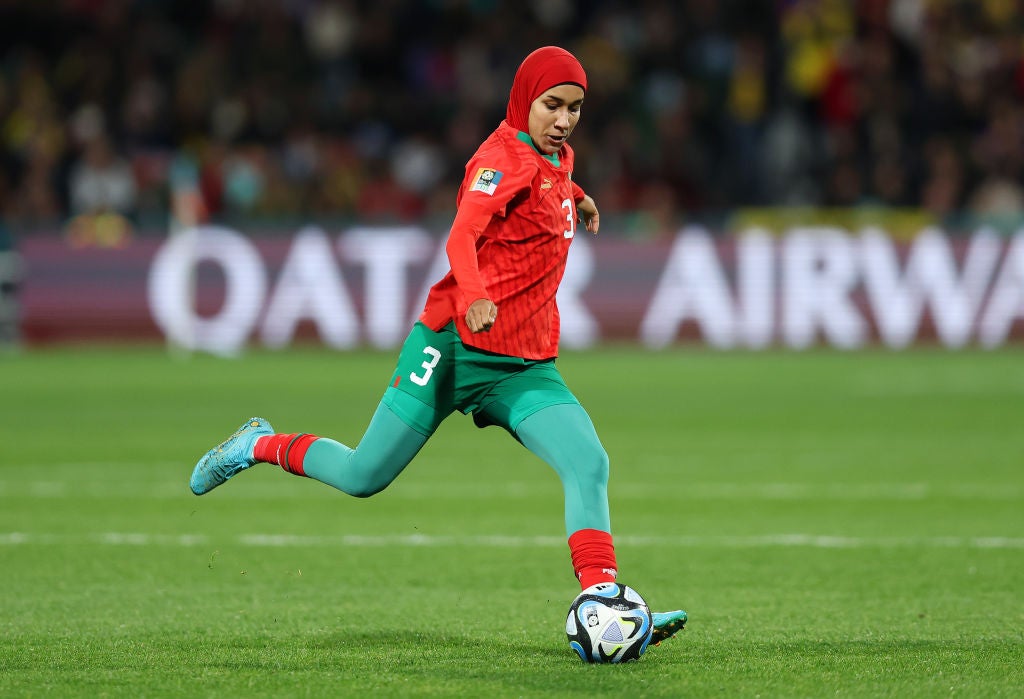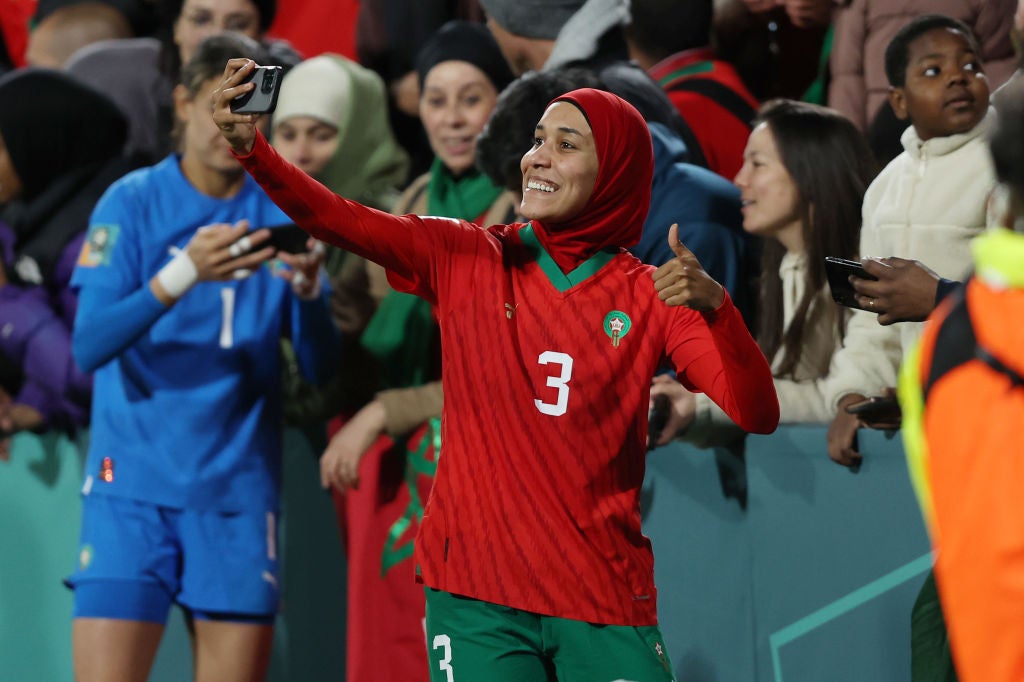Nouhaila Benzina: The hijabi-wearing Moroccan making World Cup history
Nouhaila Benzina made history when she stepped onto the field for Morocco at the Women’s World Cup — and not just as a player for the first Arab or North African nation ever in the tournament

Your support helps us to tell the story
From reproductive rights to climate change to Big Tech, The Independent is on the ground when the story is developing. Whether it's investigating the financials of Elon Musk's pro-Trump PAC or producing our latest documentary, 'The A Word', which shines a light on the American women fighting for reproductive rights, we know how important it is to parse out the facts from the messaging.
At such a critical moment in US history, we need reporters on the ground. Your donation allows us to keep sending journalists to speak to both sides of the story.
The Independent is trusted by Americans across the entire political spectrum. And unlike many other quality news outlets, we choose not to lock Americans out of our reporting and analysis with paywalls. We believe quality journalism should be available to everyone, paid for by those who can afford it.
Your support makes all the difference.When Nouhaila Benzina stepped onto the field for Morocco’s first match of the Women’s World Cup against Germany, she made history — and not just as a player for the first Arab or North African nation ever in the tournament.
The 25-year-old defender is the first player to wear the Islamic headscarf at the senior-level Women’s World Cup. She and the Atlas Lionesses have since reached the knockout stages on their debut campaign, facing France in the last-16.
“Girls will look at Benzina (and think) ‘That could be me,’” said Assmaah Helal, a co-founder of the Muslim Women in Sports Network said of the hijab. “Also the policymakers, the decision-makers, the administrators will say, ‘We need to do more in our country to create these accepting and open and inclusive spaces for women and girls to participate in the game.’”
Benzina, who plays professional club football for the Association’s Sports of Forces Armed Royal – the eight-time defending champions in Morocco’s top women’s league.
“We are honored to be the first Arab country to take part in the Women’s World Cup,” Morocco captain Ghizlane Chebbak said before the tournament, “and we feel that we have to shoulder a big responsibility to give a good image, to show the achievements the Moroccan team has made.”

Had Morocco qualified for the Women’s World Cup a decade ago, a player who wanted to wear the hijab during a game might have been forced to choose between that and representing her country.
In 2007, a referee barred an 11-year-old Canadian girl from wearing a hijab during a club match. When the issue reached FIFA, the sport's global governing body banned head coverings in competitions it sanctioned, except for coverings that exposed the neck.
Fifa cited “health and safety” concerns, some related to possible choking, with regulations forbidding “equipment that is dangerous to himself or another player.”
“That really sent a strong message to Muslim women, particularly those who wear hijabs, (that) we don’t belong,” said Helal, an Australia-based operations manager of Creating Chances and Football United.
Helal was among the social activists, Muslim athletes, and government and soccer officials who worked to overturn the ban.
In 2012, Fifa granted the Asian Football Confederation a two-year trial period during which players would be allowed to wear head coverings at international competitions. No senior-level World Cups, men’s or women’s, were scheduled during the trial period.
In 2014, Fifa lifted its ban on head coverings. Two years later, the under-17 Women’s World Cup in Jordan marked the first time Muslim players wore headscarves during an international FIFA event.
Maryan Hagi-Hashi, a Melbourne resident who attended Morocco’s public practice session last week, said she is supporting the Atlas Lionesses alongside tournament co-host Australia. She appreciates the representation that the Moroccan team and Benzina provide, she said.
Get all the latest Women’s World Cup odds here
“There’s a mixture of (Muslim) women that wear hijab and don’t wear a hijab,” Hagi-Hashi said. “I think the world has realized there is diversity.”
Helal said that since the ban was lifted, she has seen an increase in Muslim girls and women playing soccer, pursuing coaching pathways and leading their own football clubs.
“I think it’s key to understand that the hijab is an essential part of a Muslim woman, should she choose to wear it,” Helal said. “It’s actually part of our identities.”